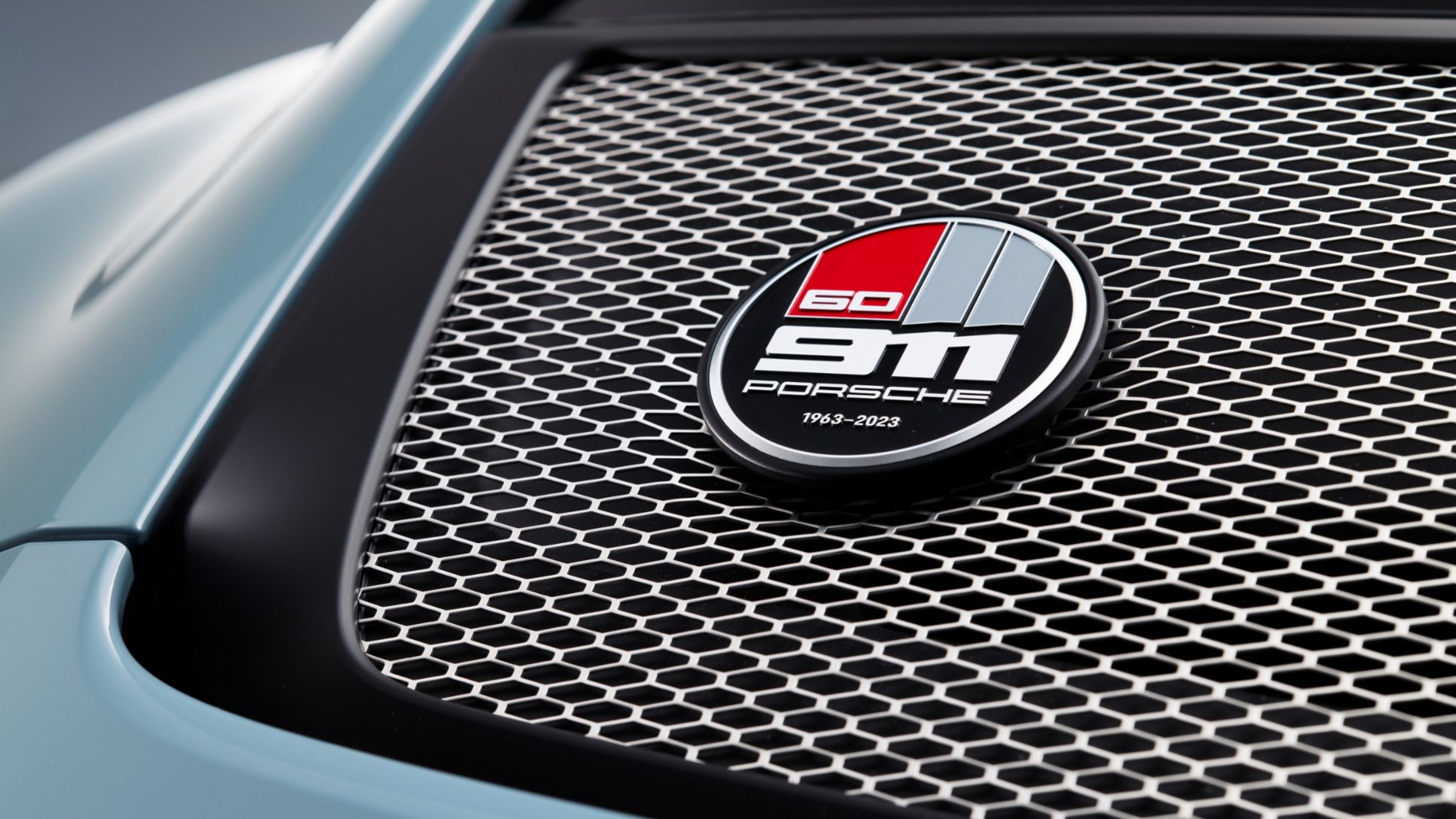Ready to race
In the second half of the 1960s, Porsche developed a race-ready version of the 911. With extensive weight-saving measures, the 911 R boasted a kerb weight of just 800 kg. While the time was not yet ripe for series production of such a stripped-down 911, the experience gained in the process of building it went to good use in a new project: from 1960, Porsche offered racing equipment for the 911 S. To avoid costly type approval for a new model, the car officially still bore its regular model designation. Internally, Porsche called it the 911 ST.
Lightweight design was a key point. Porsche homologated a combination of the 911 S with a 2.2-litre engine and the reduced interior equipment of the 911 T for FIA Group 3 regulations. Weight-reduction measures included Plexiglas windows and body components made of aluminium and glass-fibre-reinforced plastic (GFRP). The car scored its first victories in January 1970: at the Monte Carlo Rally, three Porsche 911 S 2.2 (ST) cars took 1st, 2nd and 4th. Over its production period, the 911 S (ST) in various versions would race in the Acropolis Rally (1969), on the Nürburgring (1970), in the East African Safari Rally (1971) and in the endurance races at Le Mans (1972) and Daytona (1973).
From October 1970, Porsche offered the 911 S (ST) as a road-legal ‘Sport Standard Version’ with the ‘Mehr-Minder’ (More-Less) M471 equipment number. With this number, the ST Package could be ordered from dealers as a regular component of the 911 equipment list. The motorsport version for circuit racing was M491; the rally version M494.
Porsche continued to refine the concept over time. The FIA rules allowed a displacement increase of 0.1 litres over the series-production engine. The race versions were therefore equipped with engines with 2.3-litre engines (January 1971), rising to 2.4 litres (March 1971) and finally 2.5 litres of displacement (September 1971). From January 1970, wider plastic wings made space for wider seven-inch and nine-inch tyres. Since the FIA banned the replacement of bodywork with plastic equivalents for the 1972 season, Porsche began producing widened steel body panels in September 1971.
The appearance of the 911 S (ST) changed during its manufacturing period. But it always retained a few characteristic features: the Sport Standard Version dispensed with bumper overriders, mounts for auxiliary headlights, trims and protective mouldings on the doors, and rubber and trim strips on the bumpers. Rubber straps replaced the bonnet and engine cover latches. The interior made do without chrome decoration, the passenger sun visor, mounts for seat belt attachments, sound-deadening materials, rubber floor mats, an ashtray, a heater and a glove compartment. At the same time, Porsche installed a rev counter that read to 10,000 rpm, a smaller steering wheel, Scheel or Recaro bucket seats with harness belts, reduced door panel trims, a thin needle felt carpet and a footrest for the driver. On request, there was also a combination stopwatch and clock, Twin-Master counter with a reading lamp, a horn button for the passenger and an intercom system for both occupants.
In addition to the bigger displacement, Porsche also undertook other measures on the engine of the 911 S (ST): a carburettor with bespoke intake manifolds, high-lift camshafts and a dual-ignition system boosted the power. For the racing variants, the engineers developed a counter-pressure-optimised exhaust system and modified cylinder heads with associated cylinders. In its final evolutionary stage, the 2.5-litre flat-six engine mustered 270 PS. An additional radiator regulated the temperature of the engine oil circuit. Shock absorbers from Koni or Bilstein and a stiffened shell improved handling.
Production of the 911 S (ST) ended after about three years. It was followed by another motorsport-focused model with the M471 equipment number: from then on, the 911 Carrera RS 2.7, with its sophisticated aerodynamics, further lightweight design measures and even more power, represented the performance pinnacle of the Porsche line-up.

